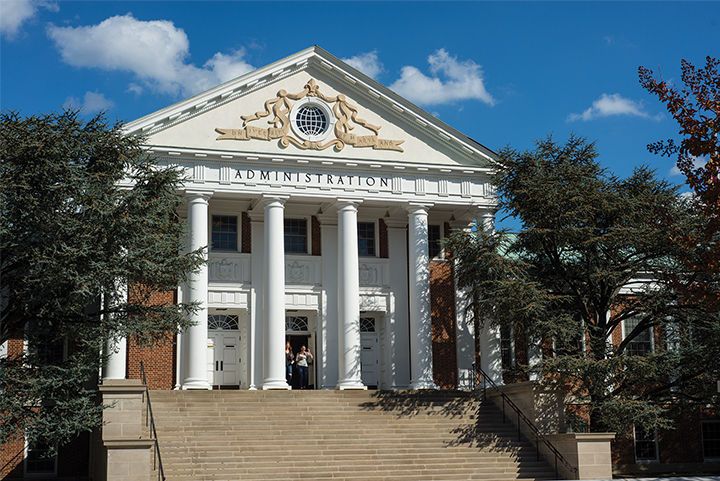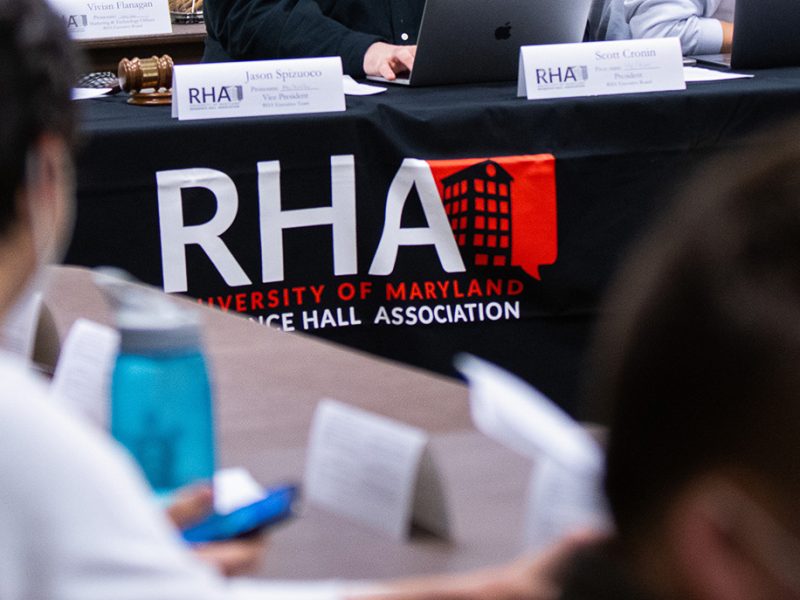Nearly five months after the completion of an external review of diversity and inclusion at the University of Maryland, its final report has been released, offering few substantive policy recommendations and largely endorsing the actions the administration had already taken.
The review — which was conducted in April after it was commissioned in the wake of the fatal stabbing of 2nd Lt. Richard Collins on the campus— aimed to assess the “impact, effectiveness, coordination, structure, and organization” of diversity and inclusion efforts across the campus.
Its findings and recommendations paint a picture of a community left reeling in the dark following the tragedy and a decentralized administrative model that struggled to address its concerns.
“Following the murder of Lt. Collins, an atmosphere of uncertainty descended on the campus that seems to be evolving into suspicion regarding the administration’s commitment to diversity,” the report read. “If left unresolved, this matter will likely affect the recruitment, retention and success not only of students, but of faculty and staff as well.”
[Read more: UMD group is creating a video series to combat school’s “abysmal” diversity messaging]
Though the 37-page report included little details and few quotes from the students, staff and faculty interviewed by the task force, it laid out generalized distrust between the community and administrators and a need for the university to adapt its system for handling diversity concerns.
Still, the authors repeatedly emphasized that President Wallace Loh and the university administration should be commended for their response to Collins’ death — and that the heart of the problem lies not in the school’s actions, but in a lack of communication about those actions.
“It was not clear that there is a general understanding and/or appreciation that President Loh and Provost [Mary Ann] Rankin have taken multiple steps to address growing acts of intolerance, a campus tragedy, and more during the past year,” the report read.
The authors specifically reviewed — and praised — the university’s “Transforming Maryland: Expectations for Excellence” diversity plan from 2010, the preliminary report of the recent campus climate study and the report from the Joint President/Senate Inclusion and Respect Task Force.
[Read more: Former diversity officer Roger Worthington criticizes UMD leadership at open meeting]
Collins’ killing — which a white former student of this university is charged in — came amid a spike in hate bias incidents across the campus. During the 2016-17 academic year, white nationalist posters were found across the campus on several occasions, a noose was hung in a fraternity house kitchen and anti-immigrant messages were written in chalk outside Stamp Student Union, among other incidents.
The final findings were outlined and delivered to Loh on June 22, according to the document. Since the start of the semester, campus activists have been pushing for the administration to release its findings — a process that many felt took far too long.
Solomon Comissiong, the president of the Black Faculty and Staff Association, had been at the forefront of calls for the report’s release. He was one of the campus leaders interviewed by the review team, and in September, he said the report’s continued suppression was “like a slap in the face.”
But upon seeing the review, Comissiong said that although it raised serious concerns, he didn’t understand what about it prompted the university to keep it concealed for so long.
“This thing was supposed to be put out there weeks ago, and it was completed several months ago,” he said. “If that’s all the content it is, why would you not put that out?”
In September, interim Chief Diversity Officer Cynthia Edmunds said there was no timeline planned for the report’s release, and that she wasn’t “especially surprised about” anything in it.
Transparency and communication in the administration were chief among the report’s focuses. Interviewees told the review team that they were often unaware of both the university’s diversity efforts and of campus events, which harmed participation and echoed the joint task force’s finding of “the impression nothing is being done.”
The report recommended the creation of a “President’s Diversity Council” and a university-wide “Equity, Diversity and Inclusion Council,” both chaired by the vice president for diversity and inclusion, to oversee the implementation and communication of diversity efforts across the campus.
The university currently doesn’t have a vice president for diversity and inclusion, something the report said was a cause for concern among interviewees. The report recommended former interim Chief Diversity Officer Roger Worthington be promoted to the position — but he resigned over the summer, after the findings were delivered to Loh.
The report stressed the need for the university to “effectively and appropriately” fund the Office of Diversity and Inclusion, which, in addition to developing campus-wide programming, houses the LGBT Equity Center and the Nyumburu Cultural Center.
Activists from both centers expressed frustration to the review team that a lack of staffing and funding had limited their ability to accomplish their goals. The report said this “negatively affected morale and contributed to distrust” of the administration.
Most of the policy and programming recommendations weren’t accompanied by many details. The recommendations included that the university work more with surrounding Prince George’s County, implement strategies for recruiting students from diverse backgrounds and develop “common readings” programs for freshmen that focus on issues of racial and ethnic identity.



